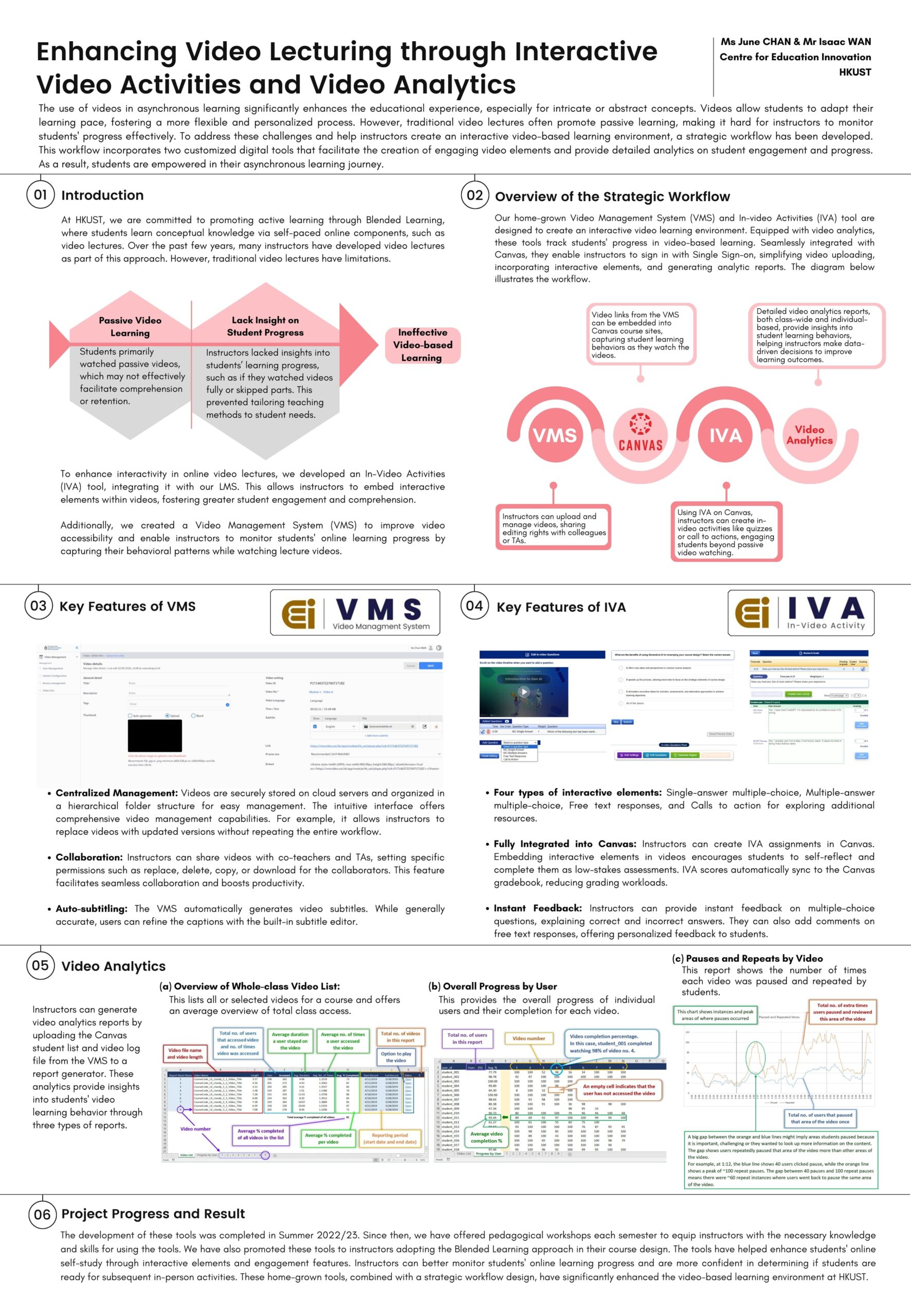Filter Presentations
3 posts found
Oral Presentation Time: 1400-1500
Venue: Rose Room, Lower Level II
Presenter(s)
– Dr Aftab AMIN, Teaching Associate, Division of Life Science, The Hong Kong University of Science and Technology
Abstract
Virtual Reality (VR), Augmented Reality (AR) and Mixed Reality (MR) empower educators to develop active-learning pedagogical approaches that motivate students to simultaneously engage, develop knowledge, social skills, and subject interest. To initiate VR/AR learning at the Division of Life Science (LIFS), HKUST, LIFS1904 Laboratory for General Biology II (comprising four experiments, ~300 diverse learners) was selected. In recent years, increasing enrollment has created manpower and space shortages, while post-pandemic issues have made student learning and the acquisition of resources, such as rat cadavers for teaching anatomy, physiology, and dissection more challenging. To address pressing issues, enhance active-learning, and make practical transitions fluid and cohesive, gamification is being used to develop a customizable, Virtual Reality Platform (VRP). A story-based narrative has also been implemented to create immersive, engaging, memorable and impactful pedagogy. In this presentation we will examine the deliverables of the project. Some of the findings from our student surveys, focus groups and interviews will also be shared to provide a better understanding of how technology-driven pedagogical innovations can facilitate active learning, information literacy, enhance student support, and facilitate peer-teaching, so that graduate attributes can be delivered.
Theme: 1: Showcase Project Achievements
Sub-theme: Strategic Development of Virtual Teaching and Learning (VTL)
Oral Presentation Time: 1600-1700
Venue: Peony Room, Lower Level II
Presenter(s)
– Dr Pui Pui Phoebe CHEUNG, Assistant Professor (Occupational Therapy), Academic Team, Yew Chung College of Early Childhood Education
– Dr Anna Aracelly OLGUIN, Assistant Professor, Academic Team, Yew Chung College of Early Childhood Education
Abstract
The United Nation Convention on the Rights of Child (UNCRC 1989) ensures the right of all children to have their basic needs taken care of, to be protected at all times, and to participate in decisions that will affect their lives. Unfortunately, millions of children around the world are deprived of these rights. As countries adopt, adapt, and uphold Child’s Rights and Protection protocols, there is a palpable need for information. Practices such as mandated reporting, enacted as law in some Western countries since the 1960’s, are now making their way to places in Hong Kong and teachers will be accountable to report. This presentation has dual objectives. One is to understand pre-service teachers’ knowledge and attitudes regarding child rights and protection pre and post course taking utilizing a co-design thinking approach. The second objective is to share information about a project aiming at co-constructing a culturally relevant Child’s Rights and Protection educational framework with parents who are Ethnic Minorities and/or parents of Special Education Needs children. From these perspectives, the knowledge and attitudes about child rights & protection among the preservice teachers and the voice of the caregivers are of immense importance towards the wellbeing of children in vulnerable populations.
Theme: 2. Thematic Exploration
Sub-theme: Whole-person Development & Diversity and Inclusion Education
Poster Presentation Time: 1225-1400; 1500-1600
Venue: H4, Tai Po-Shek-O Room, Lower Level I
Presenter(s)
– Mr Isaac Ka Chun WAN, Instructional Designer, Centre for Education Innovation, The Hong Kong University of Science and Technology
Abstract
The use of videos in asynchronous learning significantly enhances the educational experience, especially for intricate or abstract concepts. Videos allow students to adapt their learning pace, fostering a more flexible and personalized process. However, traditional video lectures often promote passive learning, making it hard for instructors to monitor students’ progress effectively. To address these challenges and help instructors create an interactive video-based learning environment, a strategic workflow has been developed. This workflow incorporates two customized digital tools that facilitate the creation of engaging video elements and provide detailed analytics on student engagement and progress. As a result, students are empowered in their asynchronous learning journey.
Theme: 1. Showcase Project Achievements
